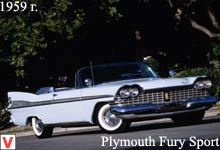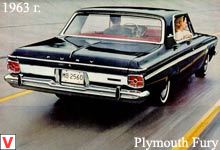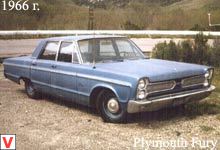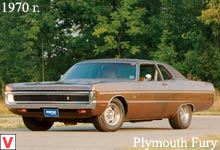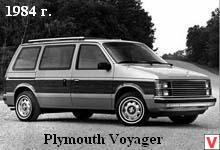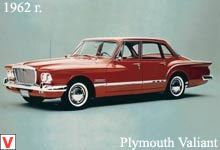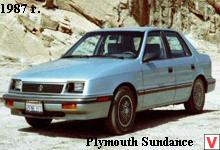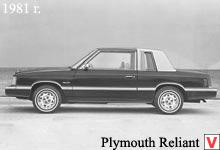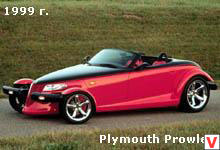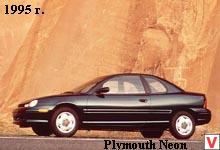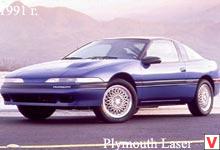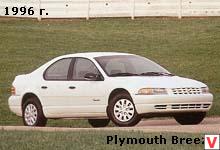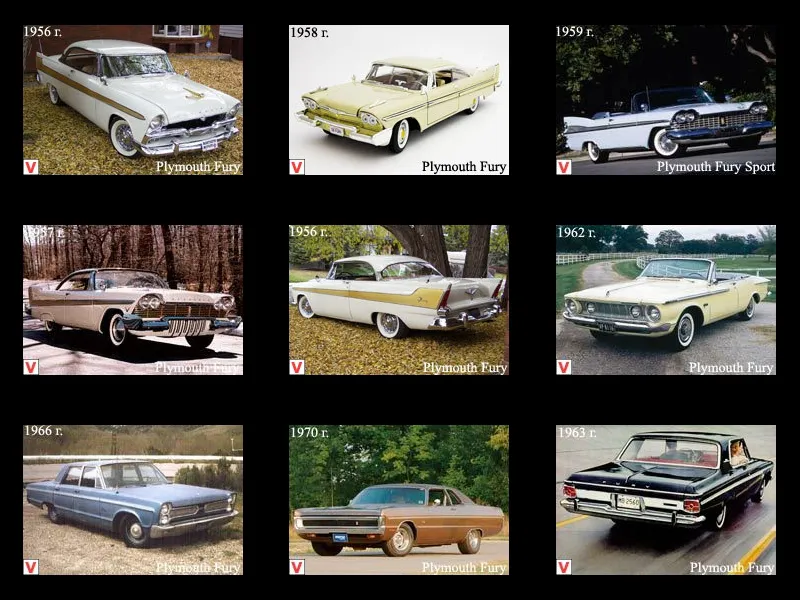
Fury was introduced in 1956. It was positioned by the manufacturer as an expensive car and was designed to raise sales of the entire brand Plymouth. Model endowed with a very aggressive name. Fury in English means rage, frenzy (furies in Roman mythology were called goddes of anger and revenge).
Therefore, it is not surprising that later on the Fury movie screen became the embodiment of hellish forces. At first, the Fury was only available in the two-door coupe and in the White Dune color. She was considered a sports exclusive model and was produced in small quantities. The exterior of the cars of 1957 and 1958 was distinguished by facing, headlights and emblems. The standard engine was an eight-cylinder Dual Fury V-800 with two carburetors. Its working volume was 318 cubic inches (about 5.2 liters), power - 218 hp Acceleration to 100 km / h took 13.5 seconds.
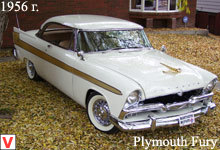
In addition, the car received a new front independent torsion bar suspension, which made it rather maneuverable: the turning radius turned out to be the smallest among the cars of this class. The rear suspension - spring. From 1958, a 305-hp V8 Golden Commando with a volume of 5.9 liters was installed on request, which clocked a huge car to 100 km / h in 7.7 seconds. The maximum speed of the Fury exceeded 200 km / h, while the permitted "maximum speed" on US roads was then about 80 km / h. On speedometers, this mark (55 miles) was marked with a red dash. Plymouth Fury was the first car, which was not marked on the speedometer.
The gearbox on the car was automatic (Torqueflite), with a push-button selector located to the left of the steering wheel. Fury has become one of the fastest cars of the late 50s, the embodiment of the American dream. In the mid-50s, designer Virgil Exner (Virgil Exner) created the Forward Look style (“Looking Forward”), featuring fast-moving lines and huge fins, which were overwhelmed by America at that time. The model Plymouth Fury of 1957–1958 became perhaps the most typical representative of the fin style.
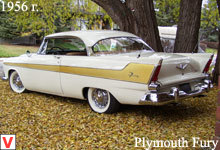
It has all its characteristic features: an elongated and squat swift silhouette, a powerful bumper, a predatory grille, twin headlights under the visor and, of course, huge fins. The advertisement of the time claimed that they increase the stability of the car in motion, but this is only an advertising move, since there is no truth in these words. A great aggressive design with an abundance of chrome-plated parts left few people indifferent. A remarkable fact, all the cars were painted in one beige and gold color scheme. In 1959, Plymouth decided to make Fury his top model.
As a result, there were sedans and wagons. In the same year, the 2-door version of the Fury Sport with an opening and hard roof was introduced. Since 1960, began production of the second generation Fury, during the release of which sales have grown significantly. As part of this generation, the appearance of the car was completely different, and the engine power reached 425 hp. In 1965, the third generation Fury debuted. In 1967, the car received a bearing body. The fourth generation was produced from 1969 to 1975.
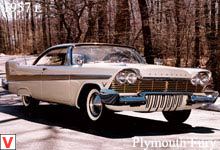
And then with Fury began to occur mutations inherent in American cars of those years: the requirements for safety and environmental friendliness, as well as the price of gasoline began to do their job. In 1975, Fury had a sort of “split personality” - in addition to full-sized models, medium-sized ones appeared. The former were now called Gran Fury, while the smaller version was simply Fury. The front of the Gran Fury could easily be recognized by an extra pair of narrow headlights located directly on the false radiator grille.
At the beginning of his career, Plymouth Fury was not an object of worship among motorists. But that all changed in the first half of the 80s, after the release of Stephen King’s novel “Christine”, where the heroine of the plot was the Fury of the 1958 model year. The terrible story about the old car-maniac, which indiscriminately kills everyone around its new owner, was filmed by John Carpenter. This was enough to get the car status cult.
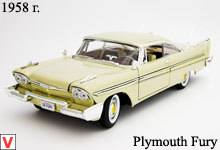
It is unlikely that any other car from those golden years of the American automobile industry has as many loyal fans. The model, not conceived as a mass one, nevertheless became very popular and even received the title Car of the Year in the states.
Other images auto Plymouth Fury
